

William Stopford
Every SUV, ute and van discontinued in Australia in 2025
7 Hours Ago
The flagship VW Tiguan (for now) once again blends Golf GTI power with all-wheel drive and a practical SUV body. Is it worth the $60k spend?
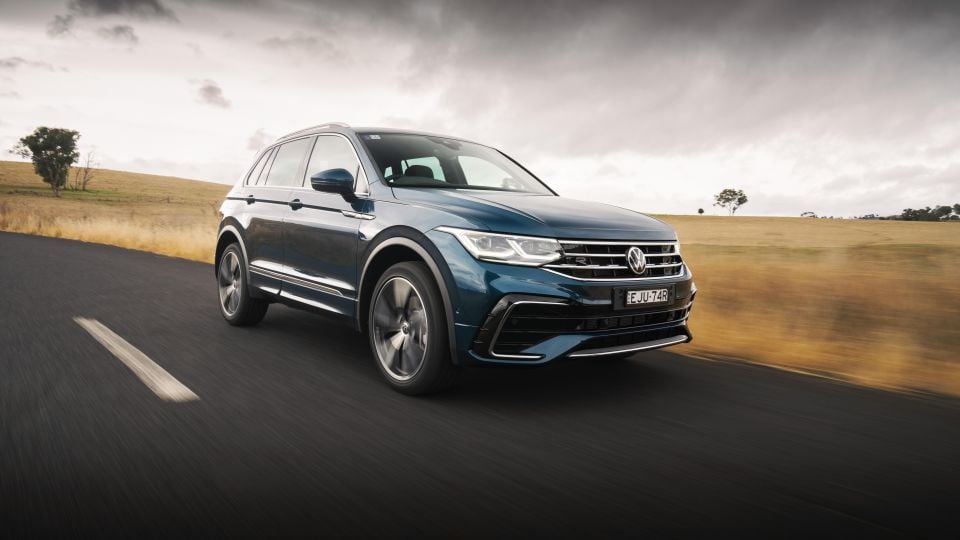
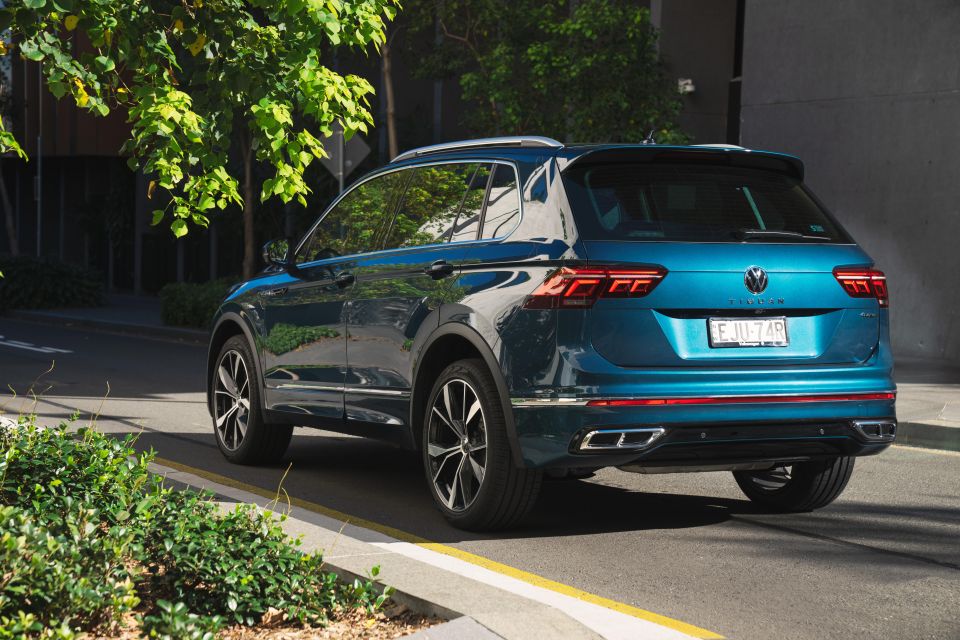

Marketplace Editor
New from
$39,690
excl. on-roads

Marketplace Editor
New from
$39,690
excl. on-roads


Marketplace Editor
New from
$39,690
excl. on-roads

Marketplace Editor
New from
$39,690
excl. on-roads
Quickly see how this car stacks up against its competition. Select any benchmark to see more details.
Where expert car reviews meet expert car buying – CarExpert gives you trusted advice, personalised service and real savings on your next new car.
The Volkswagen Tiguan has become the company’s top-selling model globally, overtaking the Golf hatchback.
In Australia the Tiguan (and Tiguan Allspace) played second fiddle to the Golf in 2020, but it remains a critical model given it competes in the country’s largest new vehicle segment.
We’ve already had a taste of the mid-life refresh a month ago with the entry-level Tiguan 110TSI Life (video below), but arguably the more important launch is the vehicle we have on test – the 2021 Volkswagen Tiguan 162TSI R-Line.
Perfectly suited to Australia’s performance-hungry tastes, the GTI-powered Tiguan accounts for the bulk of local sales – even with an average transaction price between $55,000 and $65,000.
So, does this mid-life facelift and technology upgrade keep the flagship Tiguan a desirable pseudo-performance option in the mid-size SUV space?
Let’s find out.

The 2021 Volkswagen Tiguan 162TSI R-Line is priced from $53,790 before on-road costs, or around $60,000 drive-away before options. A 147TDI R-Line diesel is also available from $55,290 – a $1500 premium.
If you want the 162kW 2.0 TSI engine without the sporty R-Line kit, you can save $3000 and opt for the Tiguan 162TSI Elegance, which is priced from $50,790 before on-roads.
See the full 2021 Volkswagen Tiguan price list below:
All prices exclude on-road costs
Our test car was finished in beautiful Nightshade Blue metallic ($800), which was the only option fitted for an as-tested price of $54,590 before on-roads.
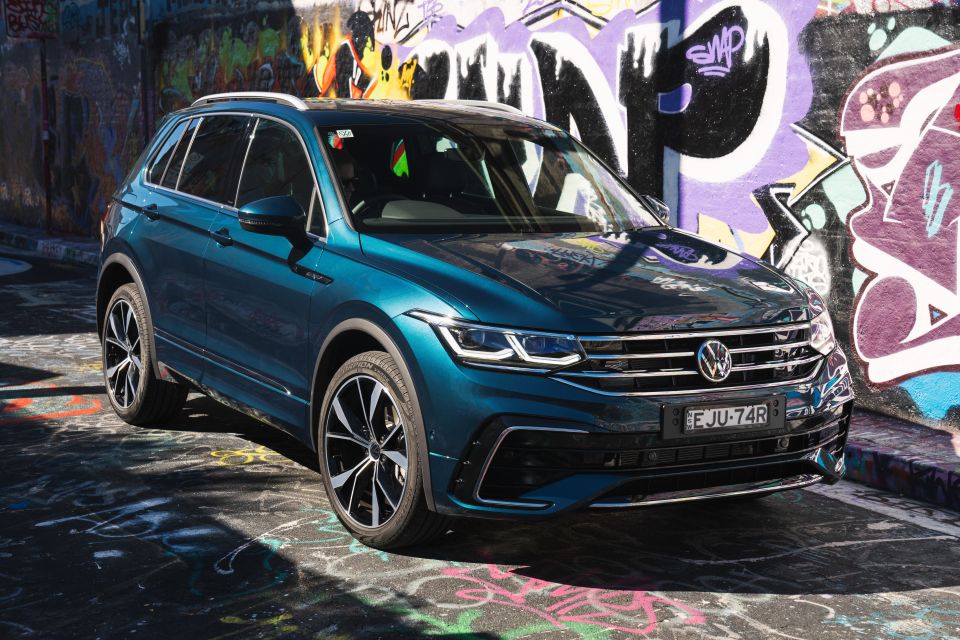
The Elegance and R-Line are available with a panoramic sunroof ($2000) as well as the Sound & Vision Package ($2500), which adds a 360-degree camera system, a head-up display, and a 480W 8+1 speaker Harman Kardon premium audio system – we’d say the latter is a must in what is a ‘flagship’ car.
At the mid-$50,000 price bracket the Tiguan is priced a higher than mainstream competitors like the Ford Escape Vignale AWD ($49,590), Hyundai Tucson Highlander N-Line 1.6T AWD ($51,000, coming Q3 2021), and the Mazda CX-5 Akera 2.5T AWD ($51,880).
The Tiguan 162TSI R-Line’s price also puts it in contention with the related Audi Q3 40 TFSI quattro S line ($59,950), the BMW X1 xDrive25i ($66,900), and the Volvo XC40 T5 R-Design ($56,990).
MORE: 2021 Volkswagen Tiguan price and specs
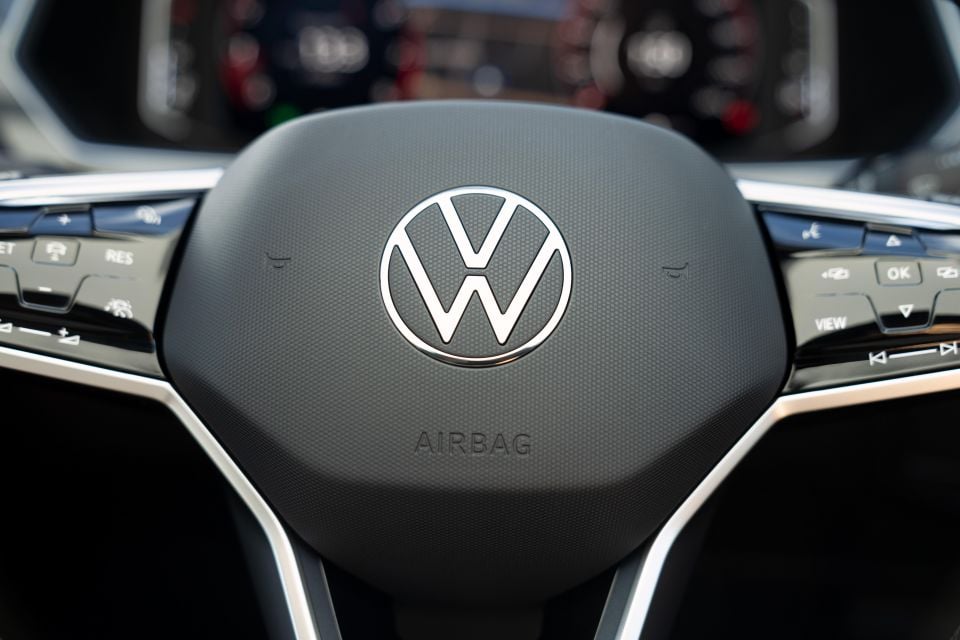
Buy your new car without the stress. It's fast, simple and completely free.

Great service from Travis and team, second time I have used this business would not hesitate to recommend them to anyone
Craig C.
Purchased a Ford Ranger in Sunshine Coast, QLD
CarExpert helped Craig save thousands on his Ford Ranger, now let us save you on your next new car.
Find a dealAppointments unique to the R-Line grade include:
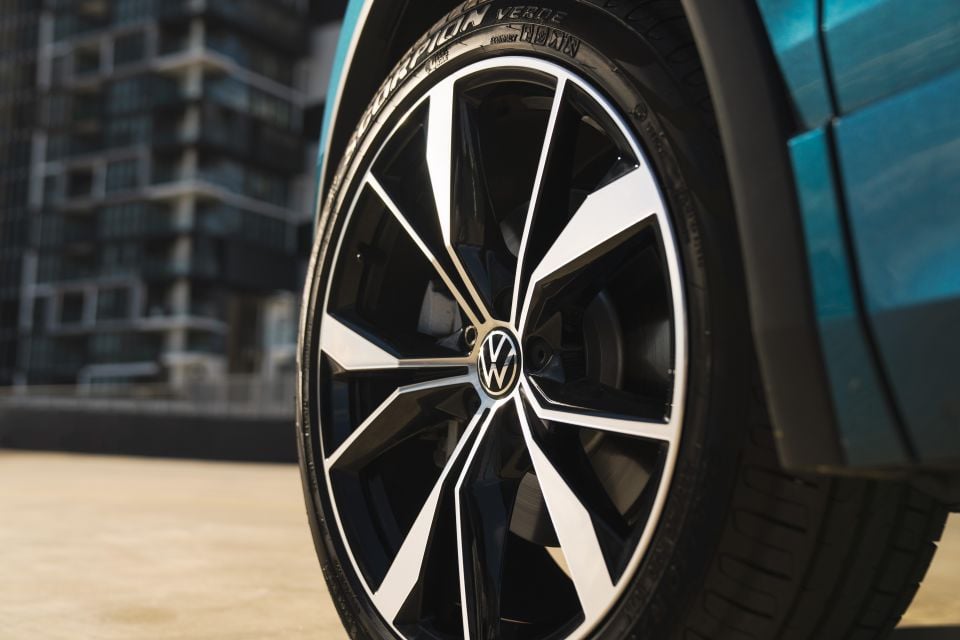
That’s on top of the specification of Elegance models, which includes:
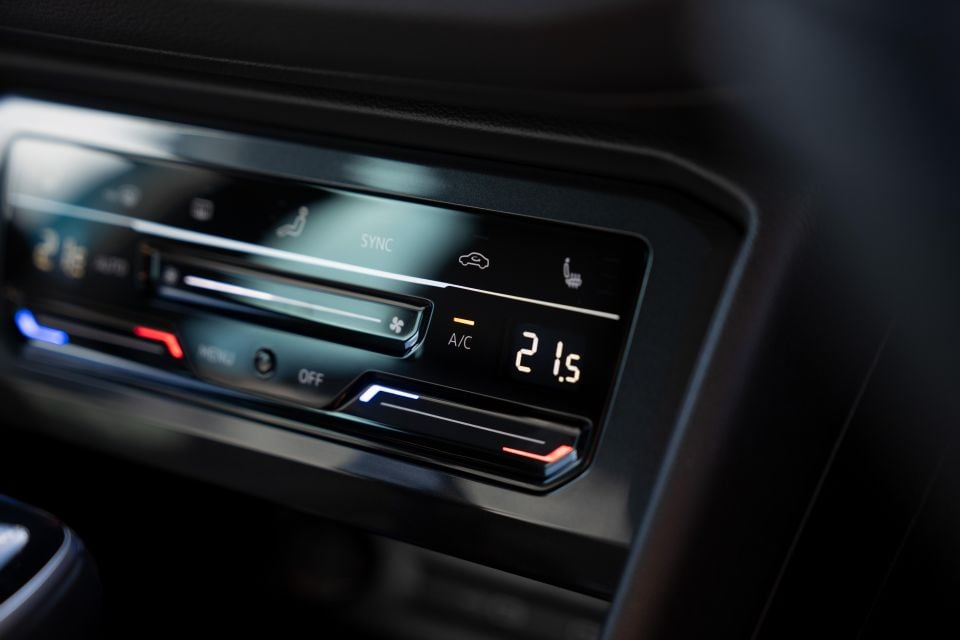
Standard specification from the base Life grade includes:
As noted earlier, to get features like a 360-degree camera, head-up display and premium-branded sound system, you need to shell out $2500 for an option package, while a panoramic sunroof is a $2000 upcharge for Elegance and R-Line models. DAB+ radio remains off the table for the Australian market.
These features are standard in most mainstream-branded competition, though a similar options structure is used for premium rivals. Regardless, a fully-loaded Tiguan R-Line is nudging $60,000 before on-roads.
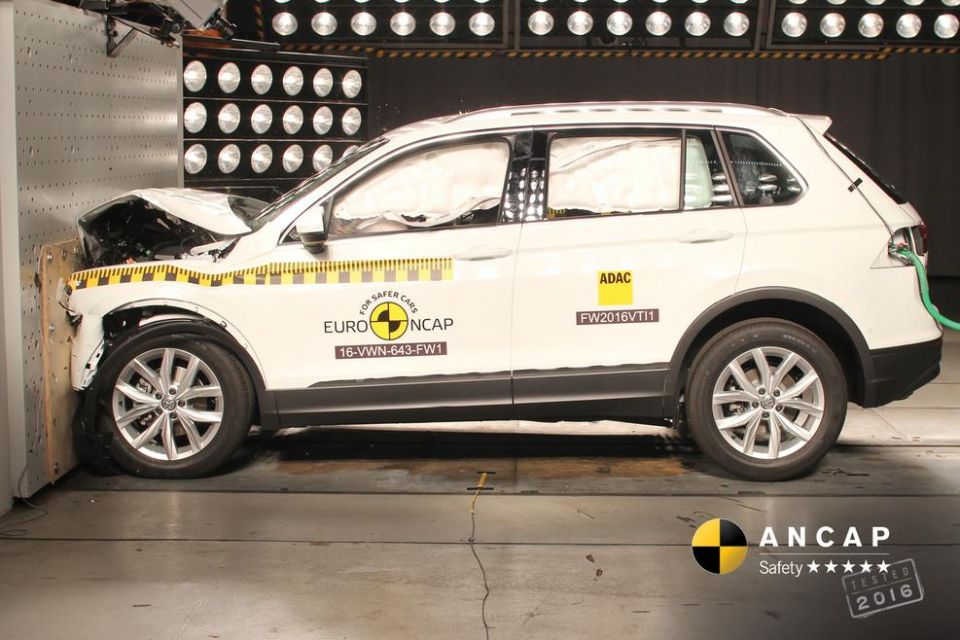
The Volkswagen Tiguan wears a five-star ANCAP rating based on tests carried out on the pre-facelift model in 2016. This also includes Allspace variants.
The Tiguan scored 96 per cent for adult occupant protection, 80 per cent for child occupant protection, 68 per cent for vulnerable road user protection, and 68 per cent for safety assist.
Standard safety equipment includes:
There’s also seven airbags scattered throughout the cabin, including dual front, front side, side curtain and driver’s knee inflators.

If you’ve already read my review on the Tiguan 110TSI Life, then you’ve already got a general idea of what the new Tiguan is like on the inside.
For the 162TSI R-Line, it’s mostly the same bar the larger central screen, sportier R-Line steering wheel with perforated sections and touch-capacitive buttons, and model-specific R-line ‘Vienna’ leather trim.
The seats are billed as ‘Comfort Sport’ units, with slightly more bolstering than the standard pews, standard heating, and electric adjustment up front.
The steering wheel is a visual and tactile upgrade over lower trim levels, though some might find the touch-capacitive controls fiddly and foreign compared to the normal buttons on Life and Elegance models.
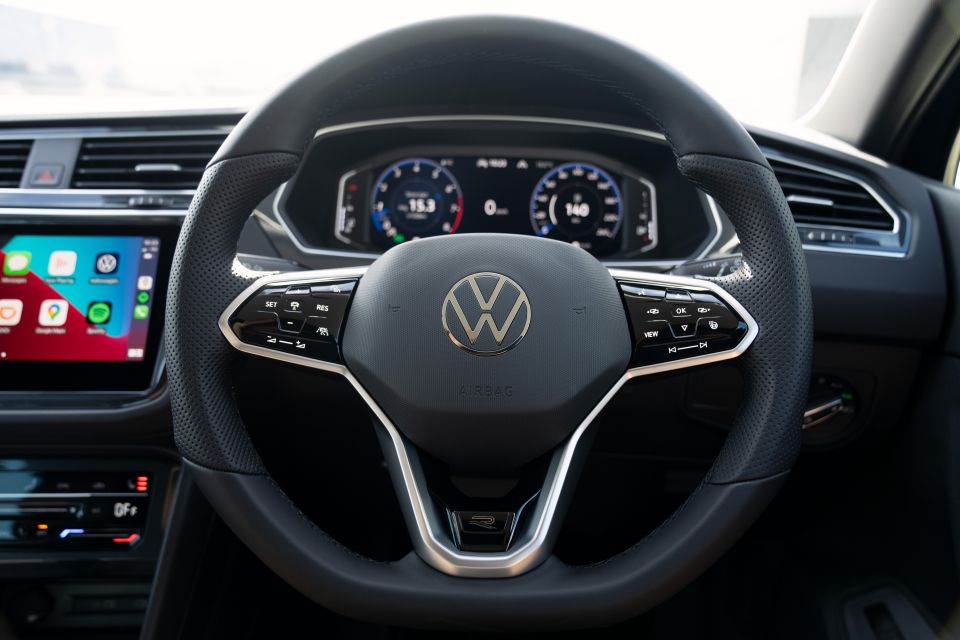
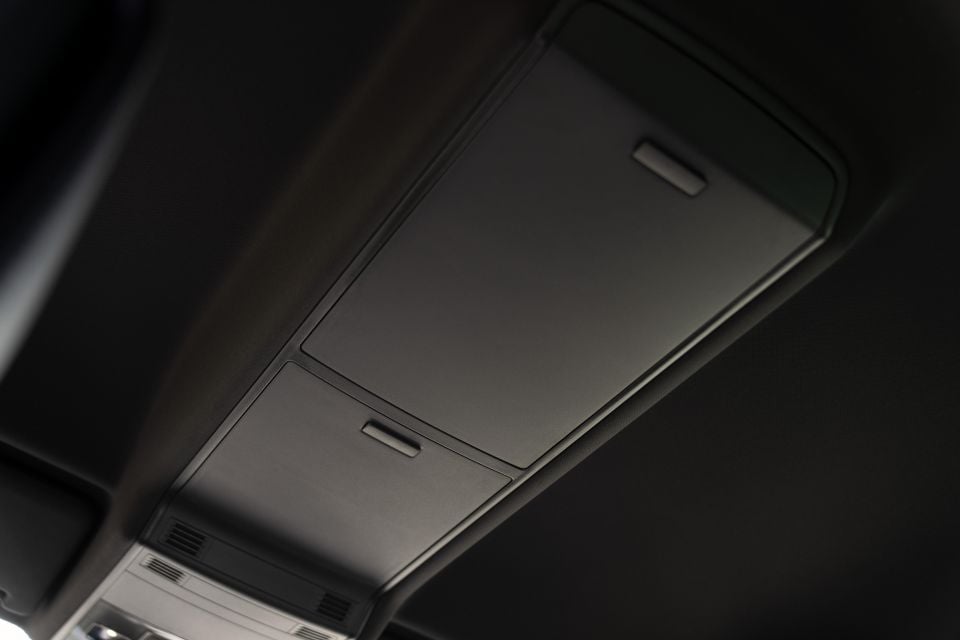
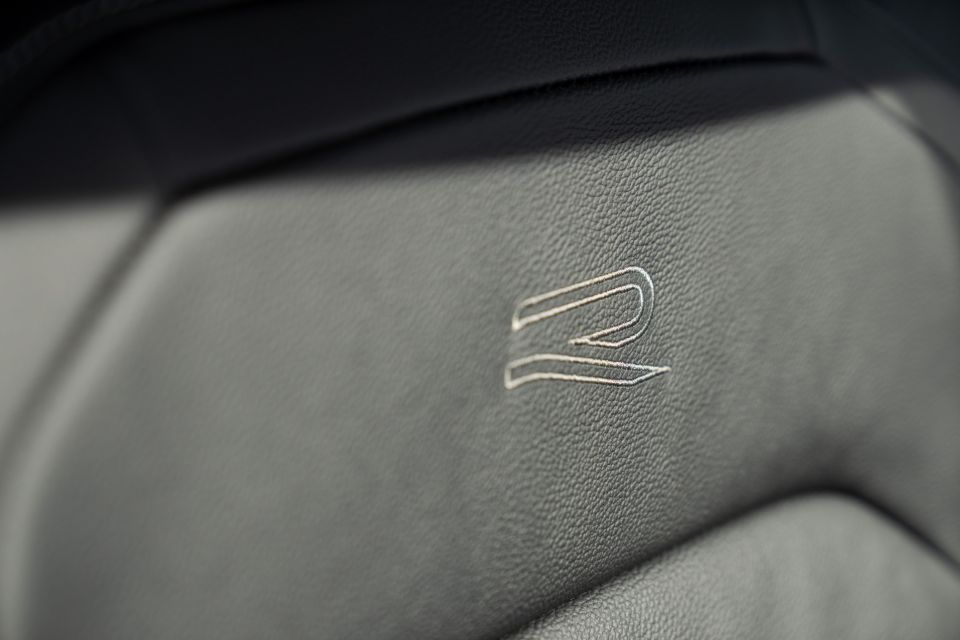
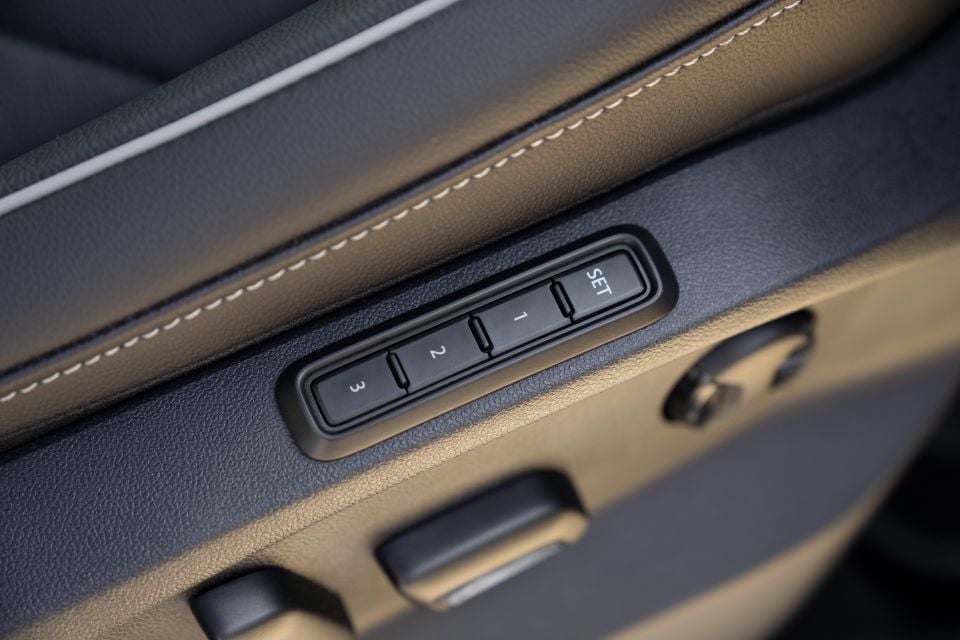
Same can be said for the touch climate controls on the centre stack, which occasionally can recognise a tap for half a degree up or down as a slide to maximum or minimum temperature. Small quirks, but they are annoying when the old physical dials worked so well.
All the other touch points carry over previous praise, with a nice mix of soft-touch and padded surfaces for elbow rests, dashboard, and front door tops, though harder surfaces are present from the mid-level down.
The 9.2-inch central touchscreen and 10.25-inch Digital Cockpit Pro display both run VW’s latest infotainment interface with wireless Apple CarPlay and Android Auto, as well as an updated look for the menus and mapping.
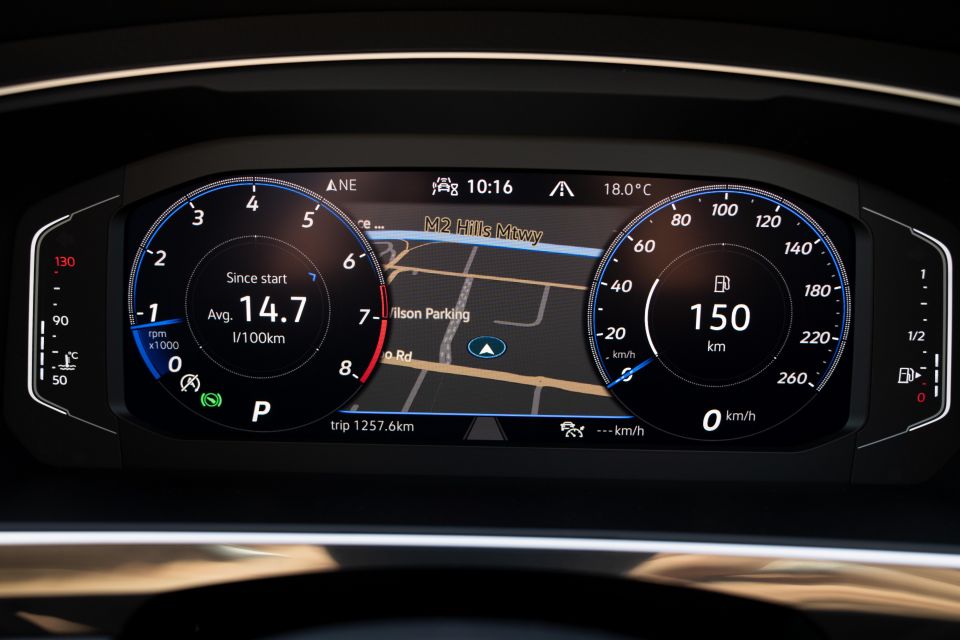
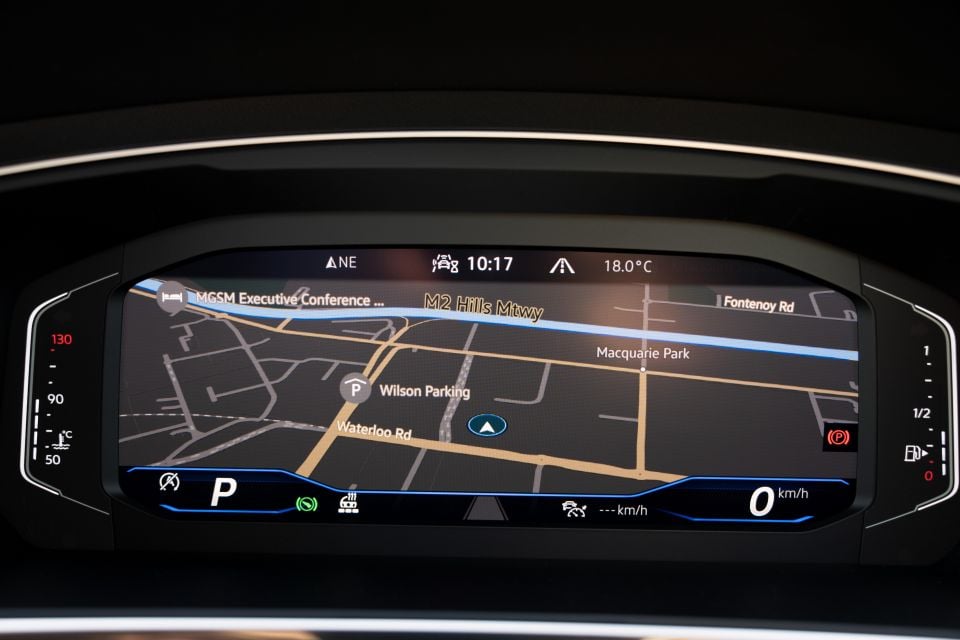
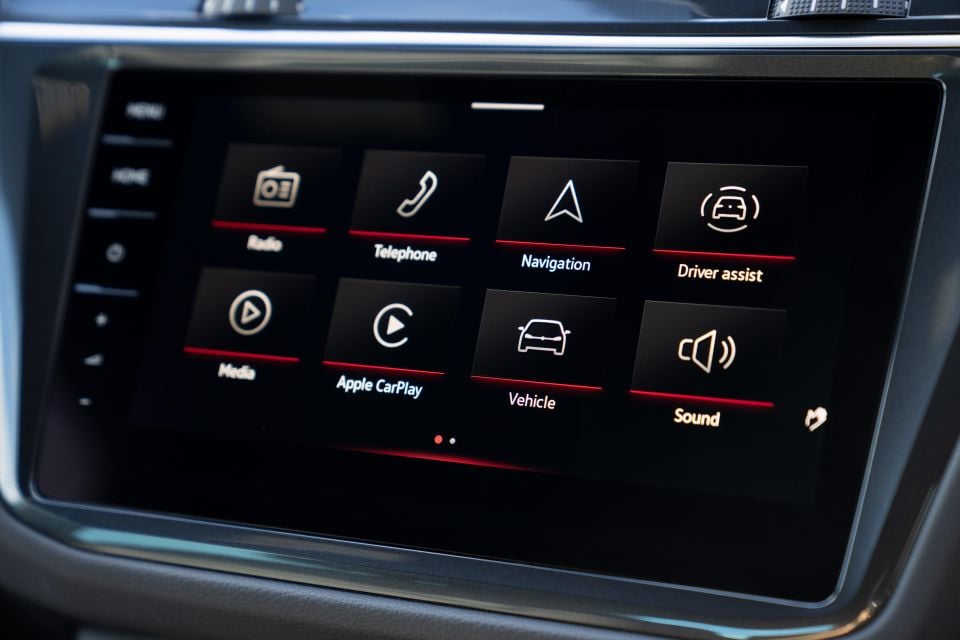

Resolution is crisp, response times are snappy, and animations are smooth. The gap between the latest Volkswagen and Skoda systems compared to say, Audi, is certainly much narrower with this latest generation of software.
I particularly liked the clarity of Google Maps in satellite mode on the central touchscreen, with rich colours and detail. It’s certainly a step up from rival systems in terms of the look and feel.
Space and comfort up front is very good, with plenty of adjustment in the driver’s seat and steering wheel. There’s good storage in the front centre armrest, atop the dashboard and in the deep door pockets, which are felt-lined.
Interestingly, Volkswagen doesn’t fit the Tiguan with wireless smartphone charging despite packing wireless smartphone mirroring, though there are USB-C ports in the front centre console and in the second row.
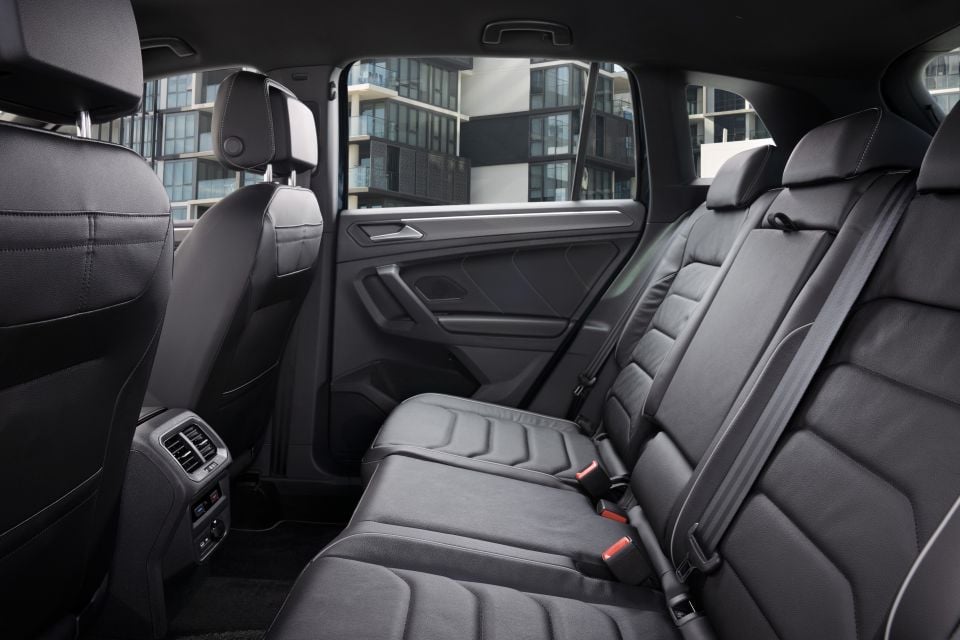
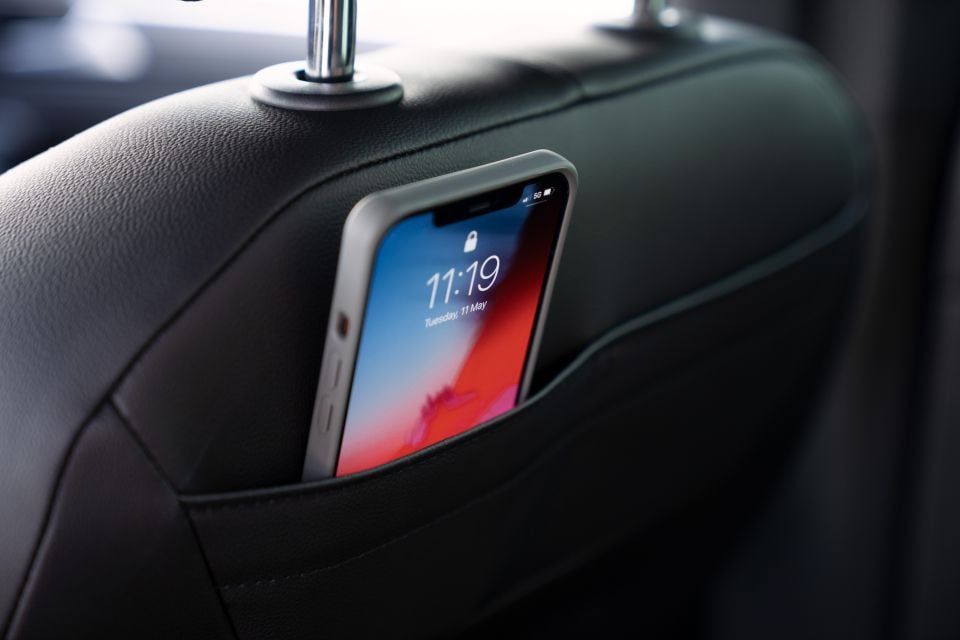
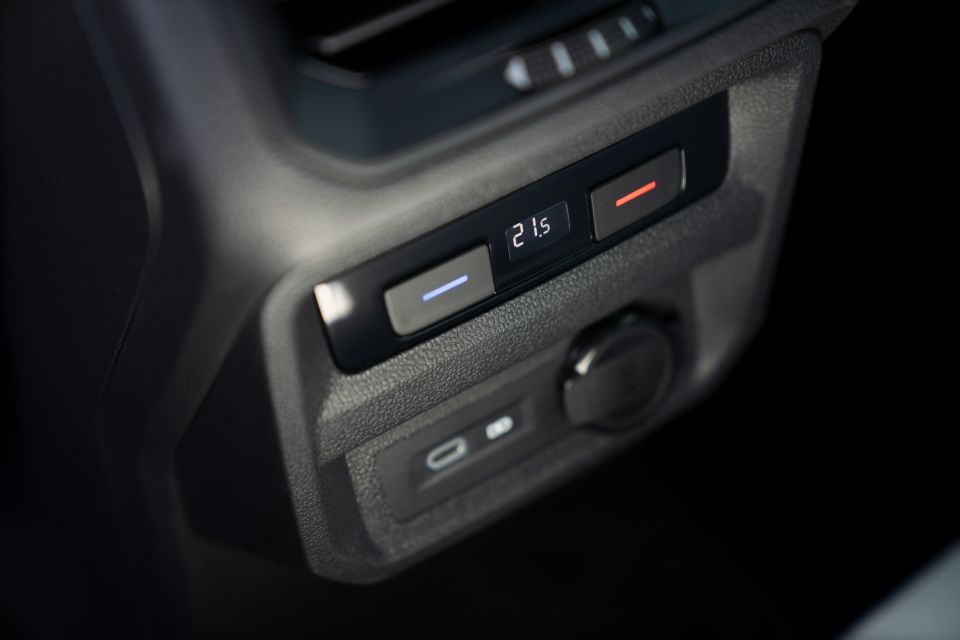
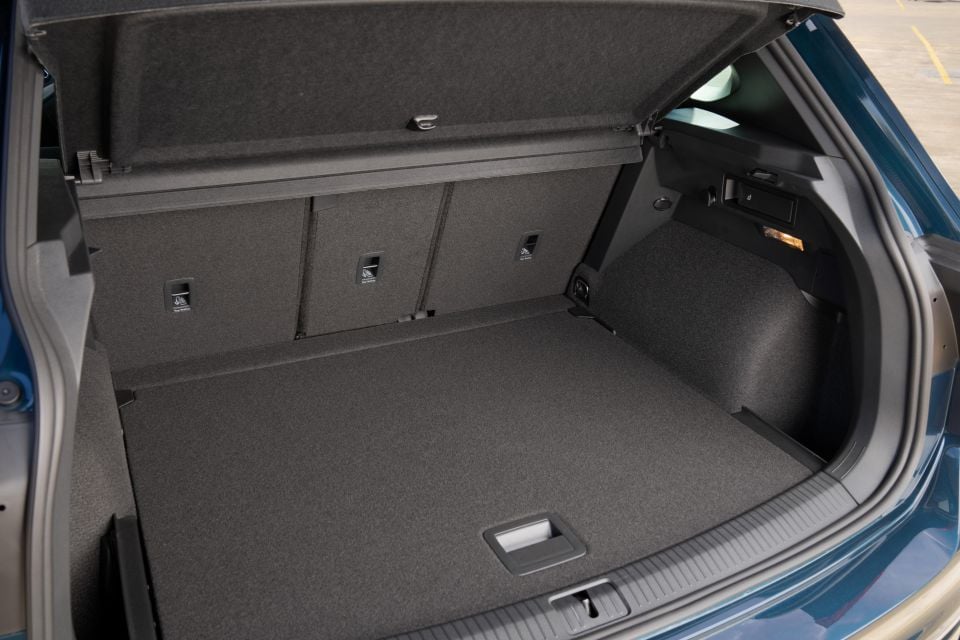
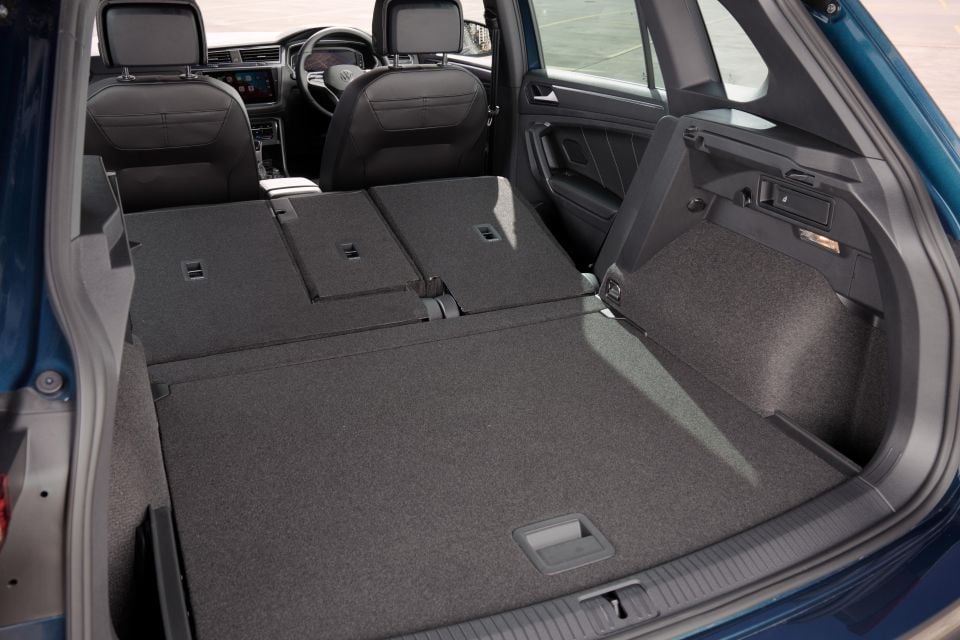
Speaking of the second row, there’s a third zone of climate controls for rear passengers with air vents, as well as rear seats that slide and recline. There’s a fold-down centre armrest with cupholders too, as well as map pockets behind the rear seats and felt-lined door bins.
Rear doors don’t have the soft door tops like the fronts, but otherwise space and comfort is up there with the class leaders, with good head- and legroom for taller passengers even behind a taller driver.
Little kiddies are catered for with ISOFIX child seat anchors on the outboard rear seats, and there’s top-tether points for all three seat positions in the back.
The boot area measures up to 615L with the rear seats upright and slid to the “forward position”, expanding to a wagon-like 1655L with the second row seats folded. As you can see in the images above, there’s an adjustable boot floor that can be lowered for maximum capacity or raised for a flat load bay in two-seat configuration.
Under the boot floor there’s a space-saver spare wheel.

Models with 162TSI designation are powered by a 2.0-litre ‘EA888’ four-cylinder turbo petrol engine. Outputs are quoted at 162kW (4500-6200rpm) and 350Nm (1500-4400rpm).
It’s essentially the same motor that powered the Mk7 and Mk7.5 Golf GTI, hooked up to a seven-speed DSG dual-clutch automatic and 4Motion on-demand all-wheel drive.
Volkswagen claims a 0-100km/h sprint time of 7.0 seconds – within touching distance of some hot hatches, but 0.5 seconds off the claimed acceleration time of the pre-facelift model.
As for fuel use, the company quotes combined consumption of 8.5L/100km with 95RON premium unleaded required as a minimum. All 2.0-litre models (petrol and diesel) come equipped with idle stop/start technology.

We averaged an indicated 8.0L/100km during our week with the vehicle, including Sydney CBD commuting as well as extended runs on the freeway. The fuel tank measures 60L.
Interestingly, the 162TSI is more efficient than the 132TSI, which features a detuned 2.0-litre petrol engine (8.8L/100km).
Should you want diesel power, the 2.0-litre 147TDI develops 147kW (3600-4100rpm) and 400Nm (1750-3500rpm), driving all four wheels via a seven-speed DSG. With the oiler, fuel use drops to a claimed 6.1L/100km.
Volkswagen quotes a braked towing capacity of 2500kg for 132TSI, 162TSI and 147TDI models, with a maximum downball weight of 200 kilograms and rear axle weight rating of 1170kg/1190kg (162TSI/147TDI).
Gross Combination Mass (GCM) for the 162TSI is 4780kg, while the diesel quotes 4820kg.
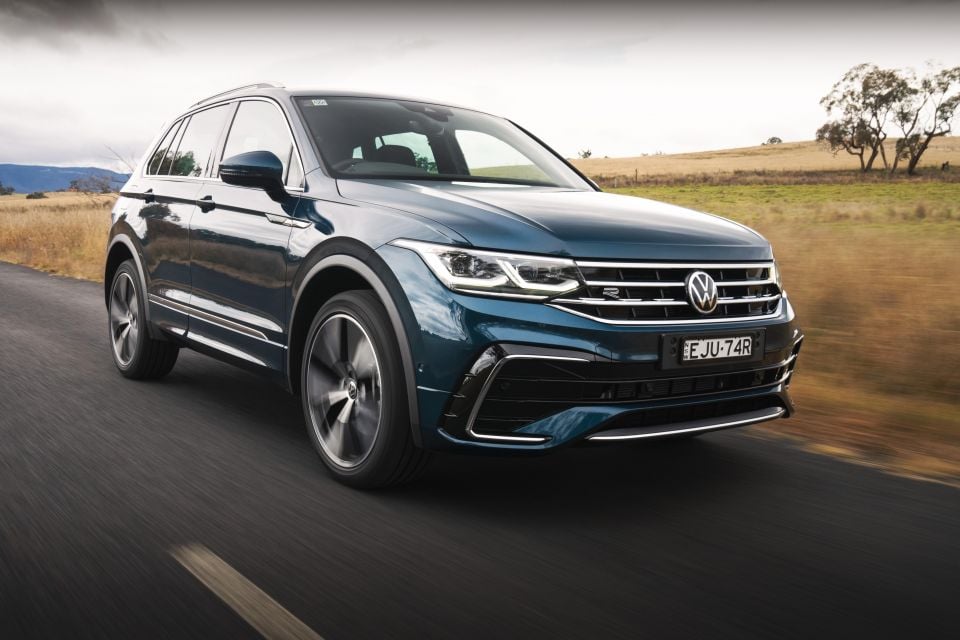
Where expert car reviews meet expert car buying – CarExpert gives you trusted advice, personalised service and real savings on your next new car.
Sharing its powertrains and MQB underpinnings with a raft of other models within the Volkswagen umbrella, the Tiguan has been praised for its car-like dynamics and classy on-road manners. This updated model is no different.
Not much (if anything) has changed under the skin, which is no bad thing.
In 162TSI guise, the Tiguan feels like it has a much larger engine under the bonnet, with outputs equivalent to previous-generation petrol V6 engines.
There’s the typical lag off the line as the dual-clutch gearbox gets things moving, but once rolling the Tiguan offers effortless, strong acceleration no doubt helped by all 350Nm being available from just 1500rpm.
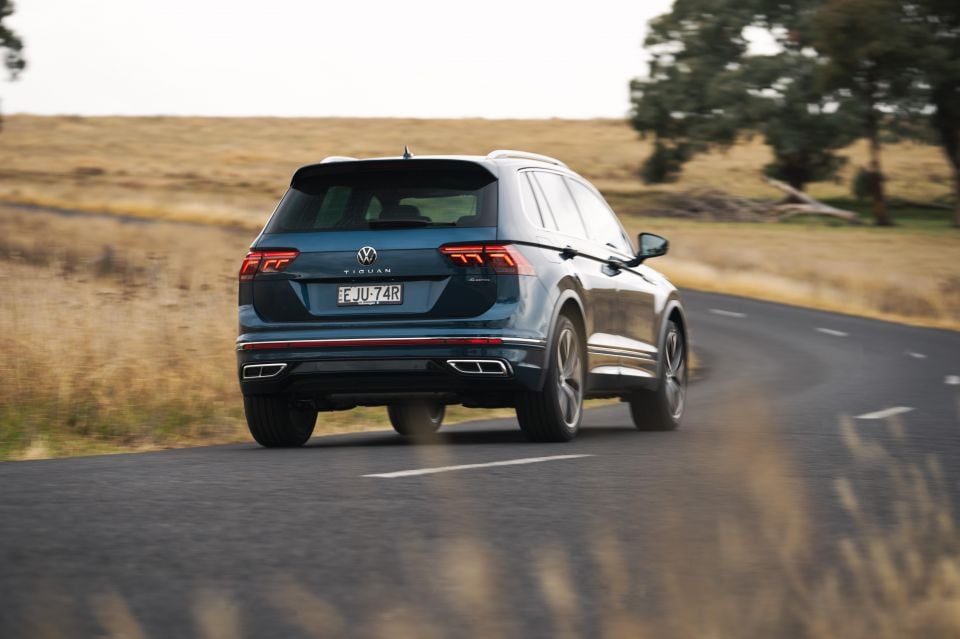
It’s not particularly ‘sporty’ in Normal or Comfort modes, but the 162kW/350Nm easily keeps up with traffic and makes getting up to freeway speeds a cinch, with the seven-speed DSG offering seamless upshifts as the speed climbs.
Knock it into Sport mode and everything sharpens up a little, from the throttle response to the steering weight as well as the adaptive dampers (branded Adaptive Chassis Control).
On the topic of the selectable drive modes, we spent most of our time driving on Sydney’s patchy roads in Comfort, which offers a genuinely cushy ride over poor surfaces despite the R-Line’s 20-inch wheels and low-profile rubber.
Harder hits are definitely felt, if not heard, but even with the big wheels the Tiguan is comfortable and well isolated. Normal is a touch firmer but offers better throttle response, so it’s worth switching between modes on the fly.
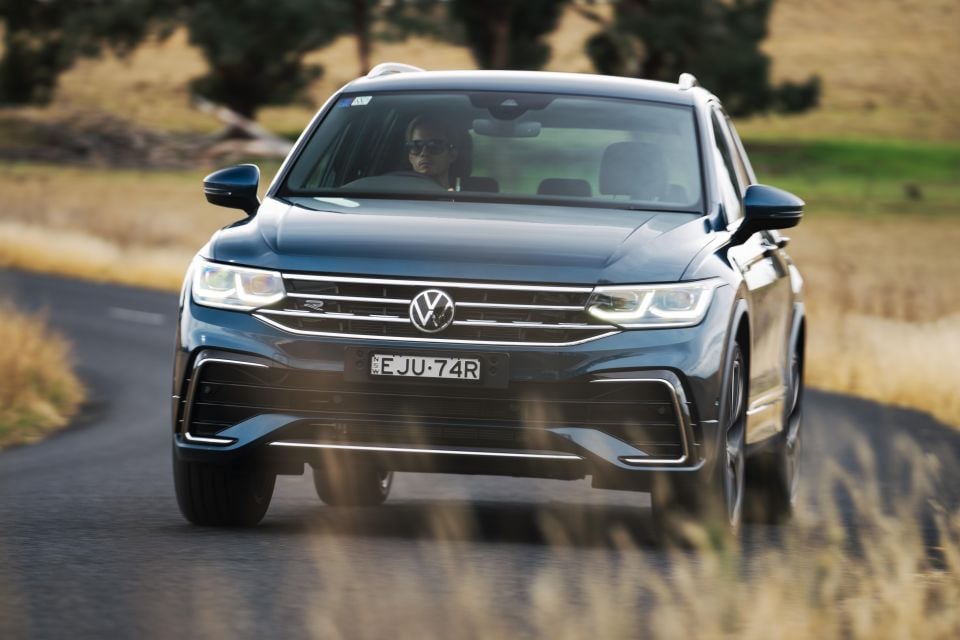
The Tiguan’s electrically-assisted steering is quite light in Comfort and Normal modes, but offers good accuracy so you can corner with confidence. It also means negotiating tight streets and carparks is really easy, and there’s an automated park assistance feature if you want the car to do the work for you.
We trialled Sport mode on a twisty road on the way down to Austinmer on the Southern Coast of NSW, and where the added steering weight, sharper throttle response and firmer damping really transformed the Tiguan R-Line into a high-riding hot hatch.
You can have a bit of fun with it on a winding B-road, taking control of shifts yourself using the steering-mounted paddle-shifters. There’s good grip from the Pirelli Scorpion Verde 255/40 tyres and the firmest suspension setting helps to limit body roll and make the Tiguan feel smaller than it really is.
There’s a sporty engine note under hard acceleration, which arguably sounds better than the synthesised notes Volkswagen has been putting in its performance models lately – e.g. the Golf R’s five-cylinder-aping note.
Refinement in town and on the freeway is generally pretty good, though the largest wheel and tyre package can transmit a bit of road noise into the cabin on coarser bitumen.
It’s far from unrefined or below par for the segment, but given this is a near-$60,000 SUV with somewhat premium aspirations, a little more sound deadening wouldn’t go astray.
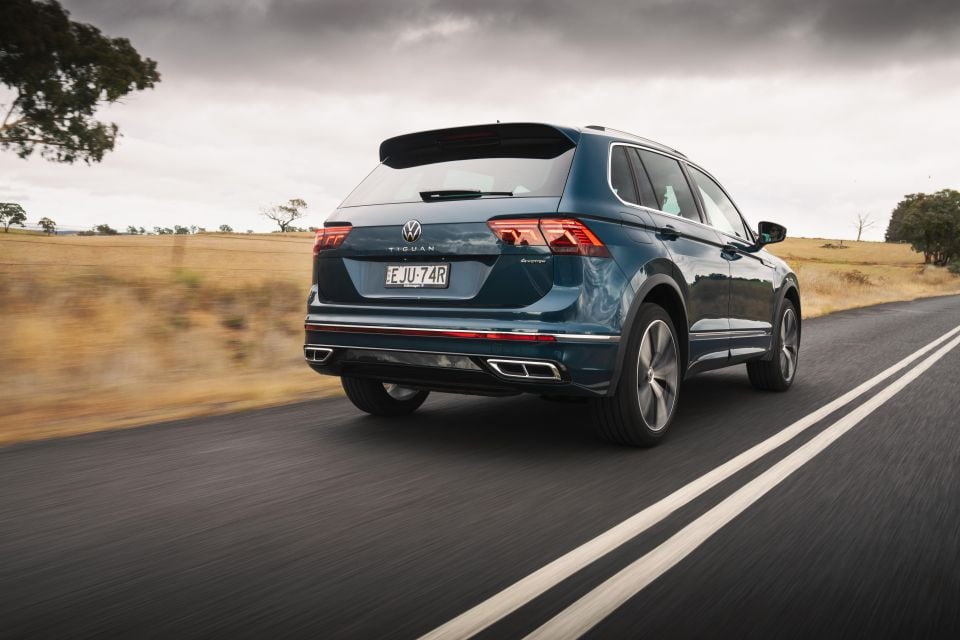
I’m a big fan of the latest IQ.Drive assistance suite.
The new Travel Assist feature works a treat and makes extended stints on the highway and freeway easy. With gentle lane guidance and well-calibrated adaptive cruise, you’ll appreciate grand touring in the Tiguan. It’s great in Comfort mode with a wafty ride.
Blind-spot assist is always handy, and the Matrix LED headlights work a treat in poorly-lit areas. You can really watch them work, as they blank out segments to prevent dazzling oncoming or leading vehicles – impressive stuff. I love the scrolling indicators front and rear, too.
The new Tiguan also includes Emergency Assist, which will flick on the hazard lights and pull the vehicle over if the driver becomes incapacitated. We didn’t test this out, but it’s an innovative feature that debuted on the Arteon and we’re glad to see such high-end technology rolled out to other models.

The 2021 Volkswagen Tiguan is backed by a five-year, unlimited-kilometre warranty.
Servicing is required every 12 months or 15,000km. Volkswagen offers pre-paid Care Plans for the Tiguan: a three-year plan for all-wheel drive models will set you back $1500, and the five-year plan costs $2500.
It’s on the higher side of the class when Toyota is charging around $215 per service for the first four years of RAV4 ownership.
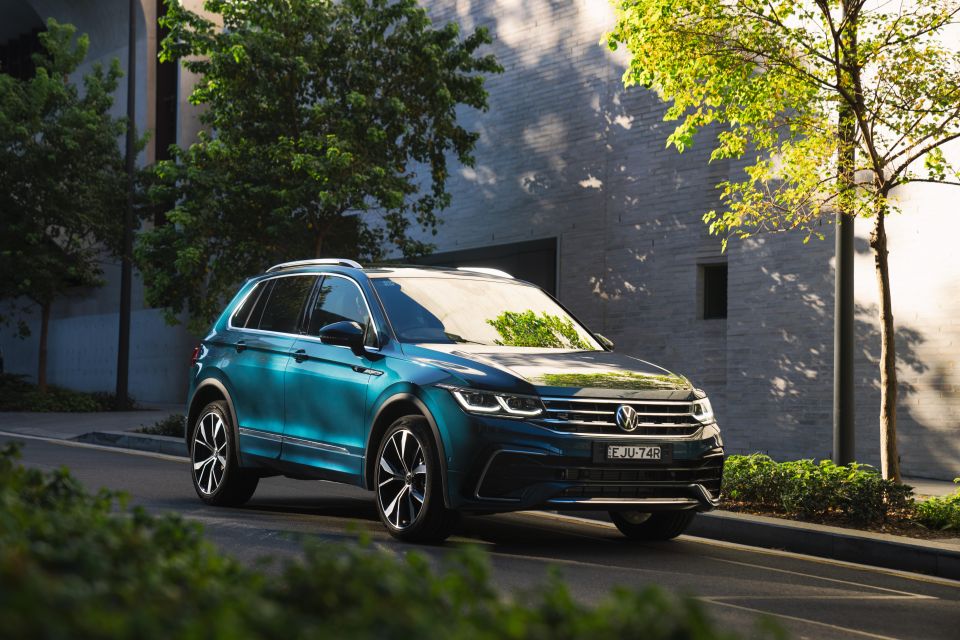
The latest Tiguan 162TSI R-Line stays true to its predecessor’s winning formula – sporty looks and strong performance wrapped in a practical SUV body.
It looks as sexy as ever and is loaded with features and tech, to the point where it’s technically cheaper and better value than before in a world where most new releases are dearer.
The all-round capability afforded by those adaptive dampers is rare in the mainstream class, and in its sportiest setting provides enough hot hatch-like traits to suit most.
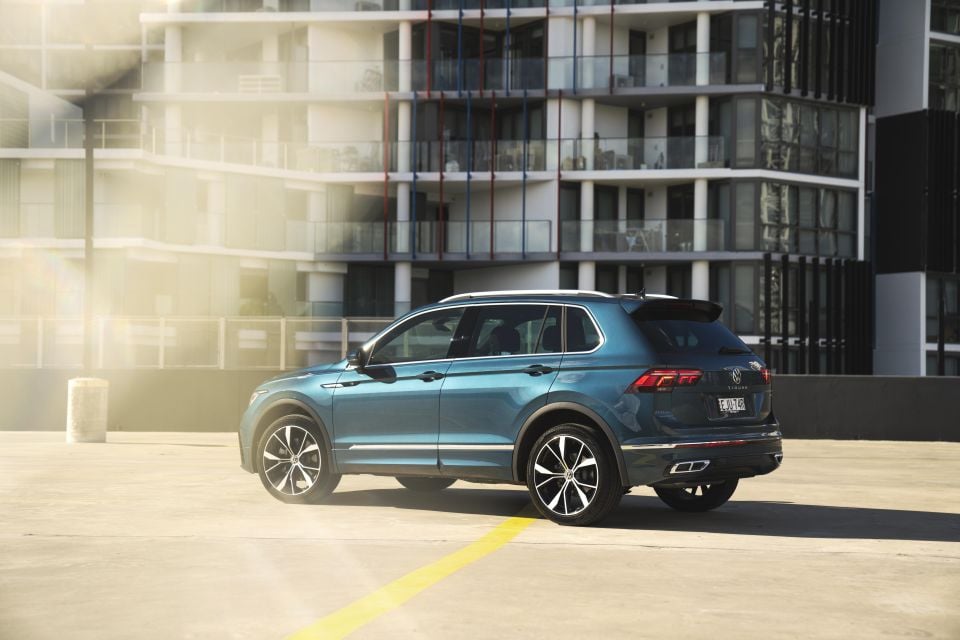
Even at $60,000 this is a lot of car for the money, and truly challenges premium-badged alternatives in terms of the drive experience, features and technology, as well as all-round refinement.
Keep in mind there’s an all-out 235kW/420Nm Tiguan R on track for 2022, though we’d wager the price tag will start with a 7, at least.
Further, this 162TSI R-Line offers pretty much everything an SUV buyer wanting a bit more punch will ever need, and does it all with a touch of class.
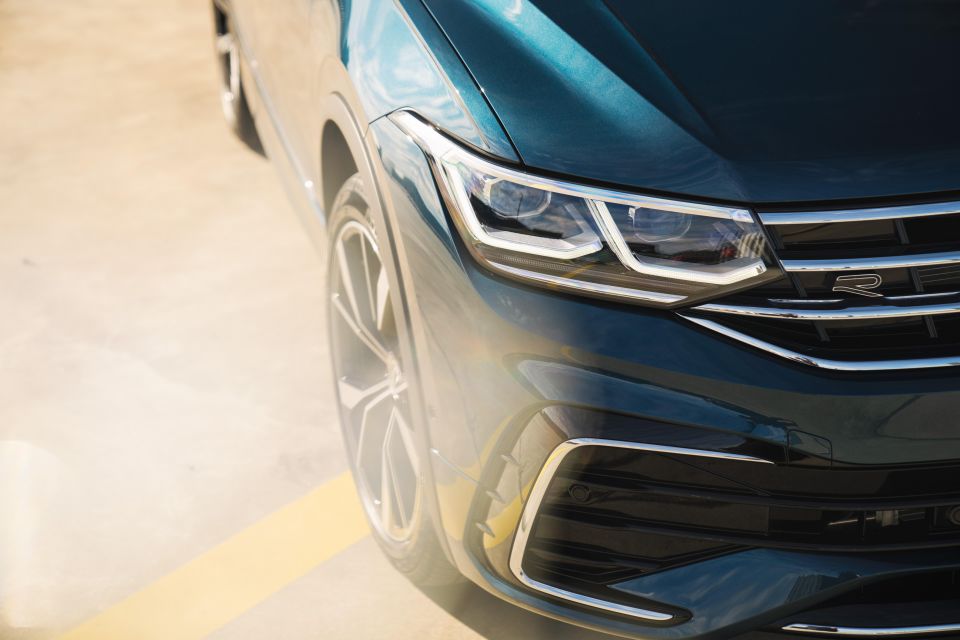
Click the images for the full gallery
MORE: Volkswagen Tiguan news, reviews, comparisons and videos
Where expert car reviews meet expert car buying – CarExpert gives you trusted advice, personalised service and real savings on your next new car.
James Wong is an automotive journalist and former PR consultant, recognised among Australia’s most prolific motoring writers.


William Stopford
7 Hours Ago


Ben Zachariah
8 Hours Ago


Derek Fung
8 Hours Ago


Matt Campbell
15 Hours Ago


William Stopford
1 Day Ago


Josh Nevett
1 Day Ago